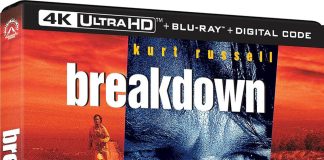 For many of you getting prepared for the digital TV (DTV) transition in 2009, and just starting to get a grasp on various television standards, you may be confused about all the SD’s and HD’s that are thrown around. The DTV transition is going to greatly improve television standards, and by the way, it already has. You don’t have to wait until Feb. 17 to hook up your digital-to-analog converters, the digital signals are already out there.
For many of you getting prepared for the digital TV (DTV) transition in 2009, and just starting to get a grasp on various television standards, you may be confused about all the SD’s and HD’s that are thrown around. The DTV transition is going to greatly improve television standards, and by the way, it already has. You don’t have to wait until Feb. 17 to hook up your digital-to-analog converters, the digital signals are already out there.
Here is a brief explanation of television broadcast terminology:
Standard Definition TV (SDTV) – SDTV is the basic level of quality display and resolution for both analog and digital television. The transmission of SDTV may be in either the traditional (4:3) or widescreen (16:9) format.
Enhanced Definition TV (EDTV) – EDTV is a step up from Analog Television. EDTV comes in 480p widescreen (16:9) or traditional (4:3) format and provides better picture quality than SDTV, but not nearly as high as HDTV.
High Definition TV (HDTV) – HDTV in widescreen format (16:9) provides the highest resolution available in broadcast today. When combined with digitally enhanced sound technology, HDTV has set a new standard for sound and picture quality in television. Current over-the-air HD broadcast formats are 720p or 1080i. (Paid service providers Dish Network and DirecTV have recently started offering 1080p by using the MPEG4 format.)
It should be noted that HDTV and DTV are not the same thing — HDTV is just one format available with digital TV.












![Wicked: For Good Is Up For Pre-order On Disc & Digital Including Collector’s & SteelBook Editions [Updated] Wicked for Good digital poster](https://hd-report.com/wp-content/uploads/2025/11/wicked-for-good-digital-poster-324x160.webp)
Yeah. That’s it. Standard 480i is horrible. 480p at least has full scans – which makes the image look sharper. That is why 1080i and 720p are so close in resolution.
Actually, EDTV is 480p (like the signal from a regular progressive scan dvd player), while SD is 480i
Someone correct me if I’m wrong here.
If EDTV is 480i then what is Standard?